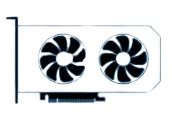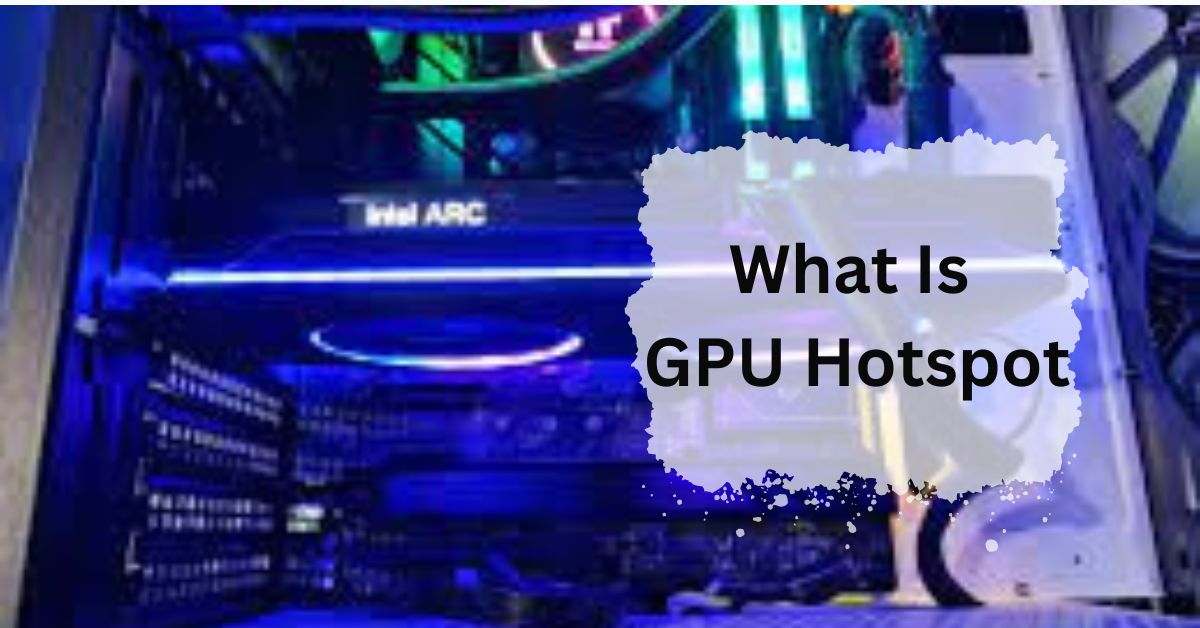In the world of computing, the GPU, or Graphics Processing Unit, plays a crucial role. It handles everything from rendering graphics in video games to performing complex calculations in scientific simulations. With the increasing demand for high-performance computing, GPUs are being pushed to their limits, often resulting in a phenomenon known as a GPU hotspot.
GPU hotspot refers to the hottest point on the graphics card. It’s usually higher than the average GPU temperature and is important for identifying areas that might overheat, helping to prevent potential damage to the GPU.
In this article, we will discuss “What Is GPU Hotspot”.
Table of Contents
What is a GPU Hotspot?

1. Definition:
A GPU hotspot refers to specific areas within the GPU that experience higher temperatures than the rest. These hotspots can occur due to various reasons, including poor cooling, high workloads, or design flaws.
2. Causes of GPU Hotspots:
- Insufficient Cooling: Ineffective cooling systems or blocked airflow.
- High Workloads: Intensive tasks like gaming or rendering.
- Poor Thermal Paste Application: Ineffective thermal transfer between the GPU and the cooler.
3. Common Areas for GPU Hotspots:
Hotspots typically form in areas with high thermal output, such as near the GPU cores or memory modules.
Why GPU hotspot Temperature Matters?
GPU hotspot temperature matters because it shows the hottest area on the graphics card. If this temperature is too high, it can cause overheating, reduce performance, and shorten the GPU’s lifespan. Keeping it cool helps maintain good performance.
Impact of GPU Hotspots:
1. Performance Degradation:
High temperatures can cause the GPU to throttle its performance to prevent overheating, leading to lower frame rates and slower processing speeds.
2. Thermal Throttling:
Thermal throttling occurs when the GPU reduces its clock speed to cool down, which significantly impacts performance.
3. Hardware Damage:
Prolonged exposure to high temperatures can damage the GPU’s components, potentially leading to hardware failure.
Detecting GPU Hotspots:
1. Software Tools:
Tools like GPU-Z, HWMonitor, and MSI Afterburner can monitor GPU temperatures and identify hotspots.
2. Manual Detection Methods:
Physical inspection for dust buildup or checking for excessive heat using touch (with caution) can also help detect hotspots.
Preventing GPU Hotspots:
1. Proper Cooling Solutions:
Ensuring your GPU has adequate cooling is essential. This can include improving case airflow, adding more fans, or using advanced cooling solutions.
2. Regular Maintenance:
Regularly cleaning your GPU and ensuring it’s free from dust and debris can prevent overheating.
3. Optimizing GPU Settings:
Tweaking your GPU settings, such as adjusting clock speeds and power limits, can help manage temperatures.
Read: Is Minecraft CPU Or GPU Intensive – Complete Guide – 2024!
Cooling Solutions for GPUs:
1. Air Cooling:
Air cooling uses fans to dissipate heat from the GPU. It’s the most common cooling method and can be quite effective when properly implemented.
2. Liquid Cooling:
Liquid cooling involves circulating coolant through a system to remove heat. It’s more efficient than air cooling but also more complex and expensive.
3. Hybrid Cooling:
Hybrid cooling combines air and liquid cooling methods for optimal performance and cooling efficiency.
Maintaining Your GPU:
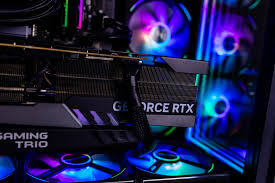
1. Cleaning the GPU:
Regularly clean the GPU and its fans to ensure dust and debris do not block airflow.
2. Monitoring Software:
Use monitoring software to keep an eye on your GPU’s temperature and performance.
3. Updating Drivers:
Ensure your GPU drivers are up-to-date to benefit from the latest performance improvements and bug fixes.
Read: Is 12GB GPU Enough For Gaming – A Ultimate Guide of 2024!
Optimizing GPU Settings:
1. Adjusting Clock Speeds:
Lowering the clock speed can reduce heat output, but it might also reduce performance.
2. Managing Power Consumption:
Adjust power settings to balance performance and temperature. Lower power consumption typically results in lower heat output.
3. Overclocking Tips:
If you overclock your GPU, do so cautiously. Monitor temperatures closely to avoid creating hotspots.
Signs of GPU Hotspots:
1. Sudden Performance Drops:
A sudden drop in performance can indicate thermal throttling due to a hotspot.
2. Increased Fan Noise:
Loud fans often mean the GPU is working hard to cool down.
3. System Crashes:
Frequent crashes can be a sign of overheating and potential hardware damage.
Fixing GPU Hotspots:
1. Clean the GPU:
Overheating of your GPU can be caused by dust and dirt. Clean it regularly to ensure proper airflow.
2. Replace Thermal Paste:
Old or dried-out thermal paste can cause hotspots. Replacing it can improve heat transfer and lower temperatures.
3. Improve Case Ventilatio:
Ensure your computer case has good airflow. Adding more fans or optimizing fan placement can help cool the GPU.
4. Update Drivers:
Outdated or buggy drivers can cause your GPU to run inefficiently, leading to overheating. Keep them updated.
5. Underclock the GPU:
If the GPU continues to overheat, underclocking it slightly can reduce the heat it generates.
Common Myths About GPU Hotspots:
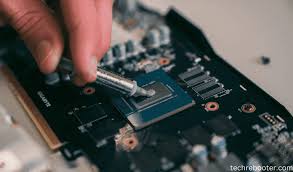
Myth 1: All GPUs Overheat:
Not all GPUs overheat. Proper cooling and maintenance can prevent overheating.
Myth 2: More Fans Always Mean Better Cooling:
More fans do not always equate to better cooling. It’s about efficient airflow and proper fan placement.
Myth 3: Liquid Cooling is Always the Best:
Liquid cooling is not always the best. It depends on the GPU, case, and user preferences.
Read: Are GPU Fans Supposed To Spin All The Time – A Ultimate Guide Of 2024!
Acceptable Gpu Hotspot Temperatures:
1. General Range:
GPU hotspot temperatures are generally acceptable between 80°C to 95°C during heavy use.
2. Safe Operation:
For most GPUs, staying below 100°C is considered safe, though lower temperatures are always better for longevity.
3. Manufacturer Guidelines:
Check the specific guidelines from your GPU manufacturer for the recommended hotspot temperature range.
4. Cooling Solutions:
If your GPU consistently exceeds 95°C, consider improving your cooling solution to avoid long-term damage.
5. Monitoring Tools:
Use software tools to monitor your GPU temperatures regularly, ensuring they stay within the acceptable range.
GPU hotspot max temp:
The maximum safe GPU hotspot temperature is usually around 95°C to 105°C, depending on the model. Exceeding this can cause overheating, damage, and reduced performance. Keep your cooling system working well to stay safe.
GPU hotspot 90C:
A GPU hotspot temperature of 90°C is high but not critical. It’s important to improve cooling to prevent potential damage and ensure stable performance. Regular maintenance can help keep temperatures lower and safer.
What does hotspot mean in GPU?
In GPUs, a hotspot is an area on the chip that gets very hot during use. These hotspots can slow down performance and may cause the GPU to overheat if not managed well.
Is 90C GPU hotspot bad?
Yes, a 90°C GPU hotspot is generally bad. It can cause overheating, reduce performance, and shorten the GPU’s lifespan. It’s important to improve cooling to keep the temperature lower.
What is GPU on my phone?
The GPU on your phone is a chip that helps display images, videos, and graphics smoothly. It works with the CPU to run games, apps, and videos more efficiently, making everything look better.
GPU hotspot temperature over 100:
A GPU hotspot temperature over 100°C is very dangerous. It can lead to overheating, causing damage to your GPU and reducing its lifespan. It’s important to improve cooling to avoid these risks.
What is gpu hotspot vs gpu?
The GPU is the main chip handling graphics on your device. A GPU hotspot is a specific area on the GPU that gets much hotter than the rest, which can cause performance issues and overheating.
GPU hotspot vs GPU temp:
GPU temperature is the average heat of the entire chip. GPU hotspot temperature is the hottest point on the chip. Hotspot temperatures are usually higher and more important for detecting potential overheating issues.
GPU hotspot 80c:
A GPU hotspot temperature of 80°C is generally safe. It’s below dangerous levels, but still a bit warm. Keeping your cooling system in good shape will help maintain safe operating temperatures.
Read: Is 70 GPU Temp Bad – A Ultimate Guide Of 2024!
How to check GPU hotspot?
To check the GPU hotspot temperature, use monitoring software like MSI Afterburner or HWMonitor. These tools show detailed temperatures, including the hottest spot on your GPU, helping you monitor its performance and safety.
Read: What Is Idle GPU Temperature – A Complete Guide Of 2024!
What Does The Hotspot Say Or Indicate On Gpu-Z?
In GPU-Z, the hotspot temperature shows the hottest area on your GPU. It helps you monitor if any part of the GPU is overheating, which can affect performance and cause damage if too high.
Read: What Is A Good GPU Temperature – Complete Guide – 2024!
What Does The Hot Spot Refer To In Gpu-Z?
In GPU-Z, “hotspot” refers to the temperature of the hottest part of the GPU. It shows if any section is getting too hot, which can help you manage cooling and prevent overheating.
How Relevant Is The Gpu Hotspot Temperature That Hwinfo64 Reports?
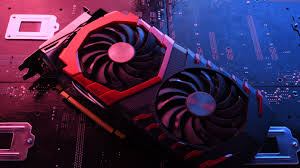
The GPU hotspot temperature reported by HWinfo64 is very important. It can be higher than the average GPU temperature. Pay close attention to it, as high hotspot temperatures can lead to overheating and damage.
FAQs:
1. How to Identify a GPU Hotspot?
Use monitoring tools like GPU-Z or HWMonitor to track temperature variations across the GPU.
2. What Tools Are Best for Monitoring?
Popular tools include MSI Afterburner, GPU-Z, and HWMonitor.
3. How Often Should I Clean My GPU?
Depending on your climate, clean your GPU once every three to six months.
4. Is Overclocking Safe for My GPU?
Overclocking is safe if done carefully and monitored regularly to avoid excessive heat.
5. Can I Fix GPU Hotspots Myself?
Yes, with proper tools and knowledge, you can fix GPU hotspots by improving airflow, reapplying thermal paste, or replacing cooling fans.
Conclusion:
In conclusion, managing GPU hotspots is essential for maintaining your graphics card’s performance and lifespan. Regular cleaning, effective cooling solutions, and monitoring tools help prevent overheating. By addressing these issues, you can ensure your GPU runs smoothly and efficiently, avoiding potential damage and performance drops.
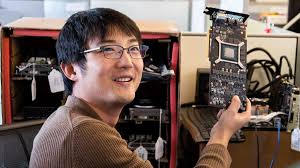
I’m Noah Lucas, the voice behind the content you find here. With 5 years of experience in the GPU field, my goal is to provide clear and helpful information to everyone interested in this technology.
Whether you’re new to GPUs or looking to deepen your understanding, my articles aim to break down complex topics into simple, easy-to-understand language. This way, no matter where you’re from, you can find the information you need without any confusion.
